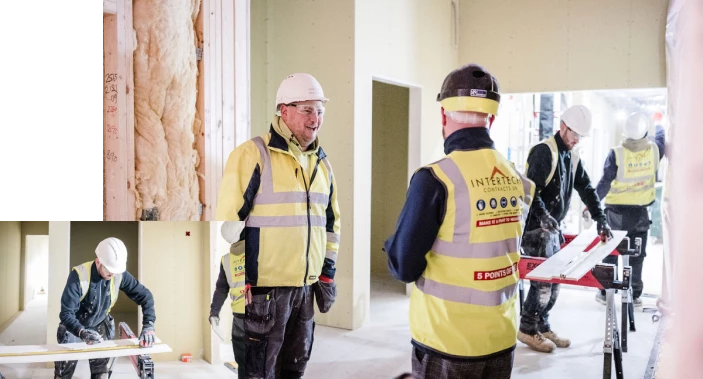
What is carpentry and joinery?
Wood is a widely used material in the construction industry, it has been used for thousands of years, and there is good reason for that. It is sustainable, easily attainable and can be applied to many functions. The versatility of wood is what makes it perfect for use in construction. The warmth of wood also makes it a beautiful addition to furniture and fixtures.
However, confusion arises when understanding the distinction between carpentry and joinery. This is understandable, primarily because they are both construction trades that work with wood.
You may not have stopped to consider the difference between carpentry and joinery before, and whilst there are transferable skills between the two trades, they employ different techniques for different purposes. So, let’s look at the two professions to help you better understand what expertise you need to complete your project.
What does a joiner do?
Simply put, a joiner employs the process of “joining” two, or more, pieces of wood together using various methods, including nails, glue and specialist procedures involving complex joints that fit together without help. Of course, there is a lot more to it than that. A joiner specialises in creating timber products like door frames, windows, stairs and furniture such as tables, chairs and desks.
The tools of the joiner’s trade tend to be heavy-duty, like circular saws and lathes, for example. So, joiners mostly work within a workshop.
Do I need a carpenter or joiner?
So, we have established that a joiner will employ skills in producing fixtures, fittings and furniture for your job, but how does this differ from the services provided by a carpenter? And how do you know which specialist you need?
The main difference is that a carpenter will mainly work on-site, focusing on larger tasks such as installing stud walls, roof trusses and fitting staircases and flooring. Carpenters will often be involved in heavy construction or fitting the work that the joiners have created. As carpenter’s tools are more lightweight, they are often found to be working on-site.
An easy rule of thumb to remember the difference between the two is that a joiner “creates” the fittings, and a carpenter “installs” them.
Professional joinery can enhance your space
Joinery is a highly skilled profession with many techniques to learn to ensure a high standard of finish. As we have mentioned, a talented joiner won’t just rely on glue or nails to hold two pieces of wood together, although that’s not to say that they never resort to these methods.
Some techniques you may be aware of, like
Mitring – the process of cutting two pieces of wood at an angle to fit them together, most commonly seen on picture frames
Butt Joint – joining two pieces of wood at a corner with their ends together without any shaping.
Tongue and groove – often seen in timber cladding or flooring.
However, more complex joinery techniques can elevate a project, including
Biscuits – small oval-shaped chips made from compressed wood shavings that fit neatly into slots cut into the two edges to be joined.
Dado Joint – great for joining a piece of wood into the middle of another via a groove. They are often seen in bookcases.
Mortise and Tenon – a cavity (mortise) is cut into one edge, whilst a wedge (tenon) is formed in the other, which snuggly fits into the cavity.
Dovetail – one of the more beautiful joints, and is often seen in furniture. The dovetail is a set of perfectly fitting interlocking ‘pins’ on one side to fit with the series of ‘tails’ on the other.
There are many more ways that joiners create stunning work by bringing pieces of wood together, but these are just a few examples that give you an idea of the breadth of knowledge an expert joiner will have.
A skilled joiner will know which technique is most appropriate for the task at hand, so employing the right person for the job is imperative. Getting it right the first time will save your company money. The years of training and on-site experience that a good joiner possesses will lead to peace of mind on completing your project. Expert joinery will last for years, so you won’t need to worry about renovation or repairs.
In conclusion, carpentry and joinery are both essential skills within the construction industry. Now we know that carpenters will focus on larger construction elements, whilst joiners will work on joining elements together to create beautifully finished fixtures and fittings.
Whilst there is an overlap between the two professions, it is vital to understand the needs of your project, and Intertech Contracts are here to help. We can discuss your requirements to help you reach the best outcome to the highest standards.
Intertech Contracts have completed Commercial Joinery projects throughout the UK. Our work has transformed many office spaces by creating practical and comfortable working environments.
For more information on how Intertech Contracts can help renovate your space with our professional Commercial Joinery and decorating services, please get in touch and speak to one of our friendly team today.
We are based in Hull but have completed contracts up and down the country, so we can discuss your project no matter your location or budget.
Category: Commercial
